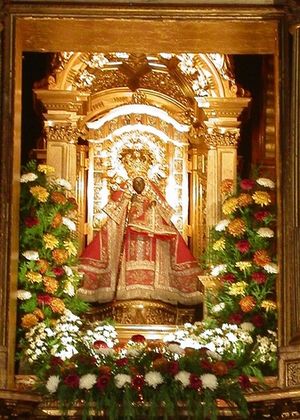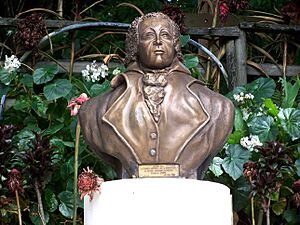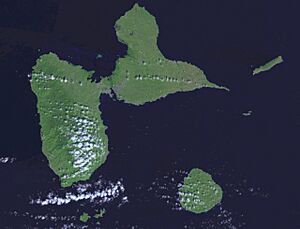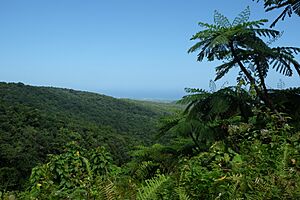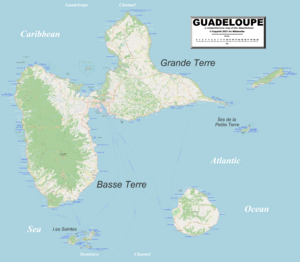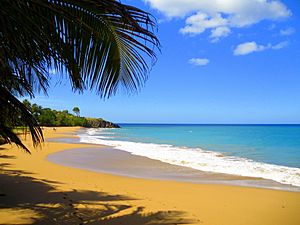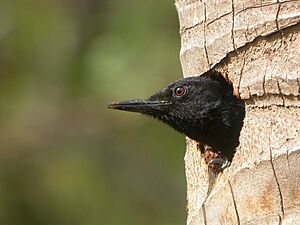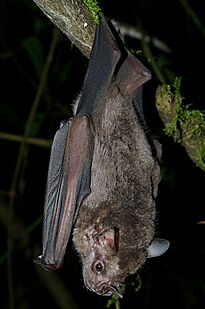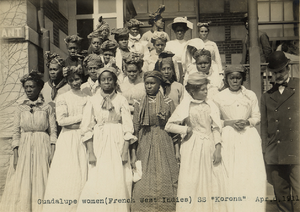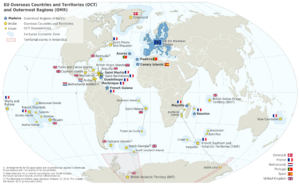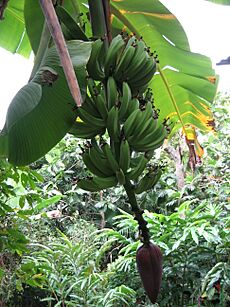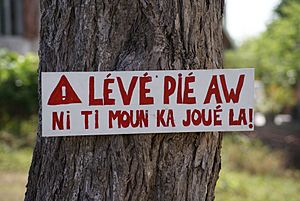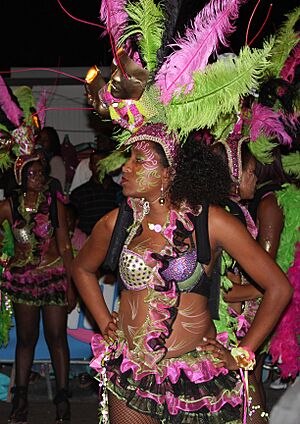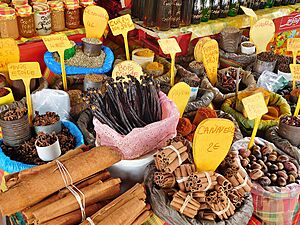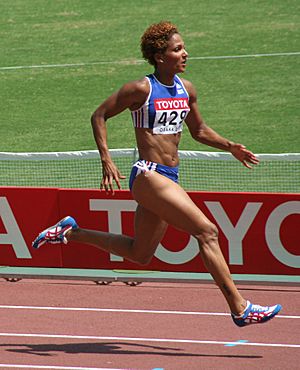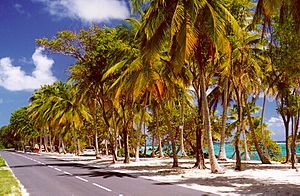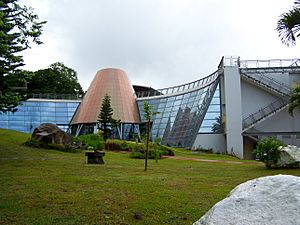Guadeloupe facts for kids
Quick facts for kids
Guadeloupe
Gwadloup (Guadeloupean Creole French)
|
|||
|---|---|---|---|
|
|||
| Anthem: La Marseillaise ("The Marseillaise") |
|||
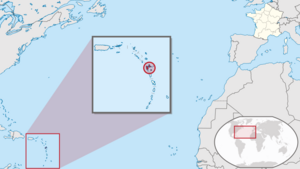
Location in the Lesser Antilles
|
|||
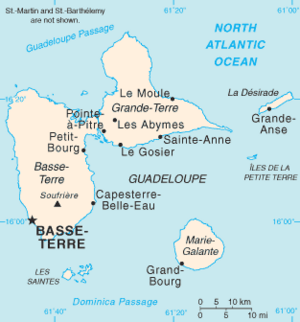 |
|||
| Country | |||
| Prefecture | Basse-Terre | ||
| Largest metropolitan area | Pointe-à-Pitre | ||
| French colony | 1648 | ||
| English occupation | 1759 | ||
| Restitution to France | 10 February 1763 | ||
| Second English occupation | 1782 | ||
| Second restitution to France | 30 May 1814 a | ||
| Communes | 32 | ||
| Area | |||
| • Total | 1,628 km2 (629 sq mi) | ||
| Area rank | 16th region | ||
| Highest elevation
(La Grande Soufriere)
|
1,467 m (4,813 ft) | ||
| Population
(1 January 2024)
|
|||
| • Total | 378,561 | ||
| • Density | 232.53/km2 (602.25/sq mi) | ||
| Demonym(s) | Guadeloupean | ||
| GDP | |||
| • Total | €9.462 billion | ||
| • Per capita | €22,500 | ||
| Time zone | UTC-4:00 (AST) | ||
| Area code(s) | +590 | ||
| ISO 3166 code |
|
||
| Internet TLD | |||
| Ethnic groups | |||
| Languages |
|
||
| Currency | Euro (€) (EUR) | ||
| Website | |||
| a Not effective until 1816. | |||
Guadeloupe is a group of islands in the Caribbean. It is an overseas department and region of France. This means it is a part of France, even though it is far away.
Guadeloupe is made up of six islands where people live. These are Basse-Terre, Grande-Terre, Marie-Galante, La Désirade, and two Îles des Saintes. There are also many smaller islands and rocks that are not lived on.
The islands are located south of Antigua and Barbuda and Montserrat. They are north of Dominica. The main city and capital is Basse-Terre, which is on Basse-Terre Island. The biggest city is Les Abymes, and the main business area is Pointe-à-Pitre. Both of these are on Grande-Terre Island. In 2024, about 378,561 people lived in Guadeloupe.
Since Guadeloupe is part of France, it is also part of the European Union and uses the euro as its money. People from the European Union can live and work there.
Christopher Columbus visited Guadeloupe in 1493. He was the one who gave the island its name. The main language spoken is French. However, many people also speak Antillean Creole.
Contents
What's in a Name?
The first people to live on the islands were the Arawak people. They called the archipelago Karukera, which means "The Island of Beautiful Waters".
In 1493, Christopher Columbus named the island Santa María de Guadalupe. He named it after a special place in Spain called Our Lady of Guadalupe. This place honors the Virgin Mary. When France took over the islands, they kept the name but changed how it was spelled and said in French. Locally, people often call the islands Gwada.
A Look Back in Time
Early Days of Guadeloupe
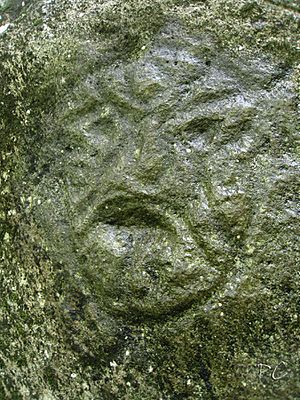
People first lived on these islands a very long time ago, possibly around 3000 BC. The Arawak people were the first group we know of. Later, around 1400 AD, the Kalina-Carib people arrived and took over.
French Arrival and Slavery
Christopher Columbus was the first European to see Guadeloupe in 1493. Spain tried to settle the islands in the 1500s, but the native people fought them off. In 1626, the French became interested in Guadeloupe. They formally claimed the island in 1635 and brought French farmers to settle there. Many native people died from diseases and violence.
By 1650, the first African slaves were brought to Guadeloupe. They were forced to work on large farms called plantations. Slaves often resisted, and there was a big uprising in 1656. France officially took control of the island in 1674. Slavery became a big part of the economy, especially for growing sugar.
Changes in the 1700s and 1800s
During the Seven Years' War, the British took over Guadeloupe in 1759. They held it until 1763. During this time, Pointe-à-Pitre became a very important port. Guadeloupe's sugar was traded with British colonies in North America. The economy grew very fast, making French colonists very rich. Guadeloupe was so valuable that in 1763, France gave up its Canadian colonies to get Guadeloupe back. Coffee and cocoa also became important crops, grown by enslaved people.
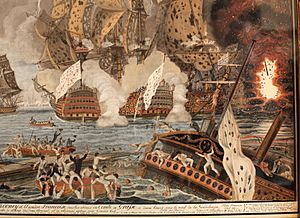
The French Revolution caused big changes in Guadeloupe. In 1794, the British invaded again. France sent forces led by Victor Hugues, who took back the islands and ended slavery.
In 1802, the French government brought back slavery. This led to a slave rebellion led by Louis Delgrès. Delgrès and his followers fought bravely. When they realized they couldn't win, they chose to blow up their gunpowder rather than surrender. The British took the island again in 1810. Finally, in 1814, Guadeloupe was given back to France.
Slavery was officially ended in the French Empire in 1848. After this, workers from India were brought in. These workers were called indentured labourers.
Guadeloupe in Recent Times
In 1946, Guadeloupe became an overseas department of France. This meant it was fully part of France.
In the 1970s, some people wanted Guadeloupe to be fully independent. Groups like the Caribbean Revolutionary Alliance (ARC) even used violence to push for independence. In 2000, Guadeloupe was given more self-rule. In 2003, two islands, Saint-Martin and Saint Barthélemy, voted to separate from Guadeloupe. This happened in 2007.
In 2009, there was a big strike by workers who wanted better pay and lower living costs. This strike lasted 44 days and caused problems for tourism. The French president visited the island and promised changes.
The Land and Its Features
Guadeloupe is a group of more than 12 islands, plus smaller islets and rocks. It is located where the Caribbean Sea meets the Atlantic Ocean. The islands are part of the Leeward Islands in the Lesser Antilles. To the north are Antigua and Barbuda and Montserrat. To the south is Dominica.
The two main islands are Basse-Terre (to the west) and Grande-Terre (to the east). From above, they look like a butterfly. A narrow sea channel separates them. Basse-Terre is more than half of Guadeloupe's land. It is mountainous and has peaks like Mount Sans Toucher and Grande Découverte. The highest point is the active volcano La Grande Soufrière, which is 1,467 meters high.
Grande-Terre is mostly flat. It has rocky coasts in the north and white sand beaches in the south. Many tourist resorts are found here.
Marie-Galante is the third-largest island. La Désirade is a flat island with its highest point at 275 meters. To the south are the Îles de Petite-Terre, which are two small islands.
Les Saintes is another group of eight islands. Two of them, Terre-de-Bas and Terre-de-Haut, are inhabited. Their landscape is similar to Basse-Terre, with volcanic hills.
How Guadeloupe's Islands Were Formed
Basse-Terre is a volcanic island. Many of the islands in this area were formed when one part of the Earth's crust slid under another. This process still causes volcanoes and earthquakes. La Grande Soufrière is the only active volcano in Guadeloupe. Its last eruption was in 1976. This caused 73,600 people to be moved away from the area for over three months.
The northern parts of Basse-Terre Island are very old, about 2.79 million years old. Some volcanoes collapsed, and new ones grew in their place. There are also beaches with dark or "black" sand.
Grande-Terre and Marie-Galante have older rock layers, but they are covered by thick limestones.
Weather in Guadeloupe
Guadeloupe has a tropical climate. This means it is warm all year round. The weather is made milder by the winds from the ocean. There are two main seasons:
- The dry season, called "Lent," from January to June.
- The wet season, called "winter," from July to December.
| Climate data for Guadeloupe | |||||||||||||
|---|---|---|---|---|---|---|---|---|---|---|---|---|---|
| Month | Jan | Feb | Mar | Apr | May | Jun | Jul | Aug | Sep | Oct | Nov | Dec | Year |
| Mean daily maximum °C (°F) | 29.1 (84.4) |
29.1 (84.4) |
29.4 (84.9) |
30.1 (86.2) |
30.7 (87.3) |
31.3 (88.3) |
31.5 (88.7) |
31.6 (88.9) |
31.5 (88.7) |
31.2 (88.2) |
30.5 (86.9) |
29.6 (85.3) |
30.5 (86.9) |
| Daily mean °C (°F) | 24.5 (76.1) |
24.5 (76.1) |
24.9 (76.8) |
25.9 (78.6) |
26.9 (80.4) |
27.5 (81.5) |
27.6 (81.7) |
27.7 (81.9) |
27.4 (81.3) |
27.0 (80.6) |
26.3 (79.3) |
25.2 (77.4) |
26.3 (79.3) |
| Mean daily minimum °C (°F) | 19.9 (67.8) |
19.9 (67.8) |
20.4 (68.7) |
21.7 (71.1) |
23.1 (73.6) |
23.8 (74.8) |
23.8 (74.8) |
23.7 (74.7) |
23.3 (73.9) |
22.9 (73.2) |
22.1 (71.8) |
20.9 (69.6) |
22.1 (71.8) |
| Average precipitation mm (inches) | 84 (3.3) |
64 (2.5) |
73 (2.9) |
123 (4.8) |
148 (5.8) |
118 (4.6) |
150 (5.9) |
198 (7.8) |
236 (9.3) |
228 (9.0) |
220 (8.7) |
137 (5.4) |
1,779 (70.0) |
| Average precipitation days | 15.0 | 11.5 | 11.5 | 11.6 | 13.6 | 12.8 | 15.4 | 16.2 | 16.6 | 18.1 | 16.6 | 15.7 | 174.6 |
| Mean monthly sunshine hours | 235.6 | 229.1 | 232.5 | 240.0 | 244.9 | 237.0 | 244.9 | 248.0 | 216.0 | 217.0 | 207.0 | 223.2 | 2,775.2 |
| Source: Hong Kong Observatory | |||||||||||||
Tropical Storms and Hurricanes
Guadeloupe is in an area where cyclones (hurricanes) often happen. The deadliest hurricane was in 1776, which killed at least 6,000 people.
In 1989, Hurricane Hugo caused a lot of damage. In 1995, three hurricanes hit the islands in less than three weeks. More recently, Hurricane Irma and Hurricane Maria hit in 2017.
Plants of Guadeloupe
Basse-Terre has rich soil and a lot of rain, so it is very green. Most of the island's forests are here, with trees like mahogany and ironwood. Mangrove swamps grow along the Salée River. Much of the forest on Grande-Terre has been cleared.
Between 300 and 1,000 meters high, the rainforest grows on Basse-Terre. You can find trees like the white gum tree and many orchids. Above 1,000 meters, there is a humid savannah with mosses and lichens.
The dry forest covers Grande-Terre, Marie-Galante, Les Saintes, and La Désirade. Near the coast, you can find plants like sea grape and Coconut trees. In dry areas, there are many cacti.
Mangrove forests grow along some coasts. They are important for the environment.
Animals of Guadeloupe
There are not many native land mammals, except for bats and raccoons. The Javan mongoose was brought to the islands by people. Bird species include the unique purple-throated carib and the Guadeloupe woodpecker. The waters around the islands have many different kinds of marine life.
Sadly, many snakes and lizards became extinct after Europeans arrived. This happened because new animals like cats, mongooses, and rats were brought in, and they hunted the native reptiles.
Protecting Nature in Guadeloupe
In recent years, Guadeloupe's natural areas have been affected by hunting, fishing, and building. Farming, especially for bananas and sugar cane, has also caused problems. This has led to damaged coral reefs and mangroves. Water pollution from pesticides is also a concern.
Despite these challenges, there is a strong effort to protect Guadeloupe's beautiful nature. Many areas are now protected, like the Guadeloupe National Park, created in 1989. In 1992, the Biosphere Reserve of the Guadeloupe Archipelago was created. This helps protect the plants and animals.
Earthquakes and Tsunamis
Guadeloupe is in an area with many geological faults. This means there can be earthquakes. The 1843 earthquake was very strong. It killed over a thousand people and caused a lot of damage in Pointe-à-Pitre.
In 2004, a strong earthquake hit the islands, especially Les Saintes. It caused one death and a lot of damage.
Who Lives in Guadeloupe?
| Historical population | ||
|---|---|---|
| Year | Pop. | ±% p.a. |
| 1954 | 223,675 | — |
| 1961 | 276,545 | +2.96% |
| 1967 | 305,312 | +1.66% |
| 1974 | 315,848 | +0.49% |
| 1982 | 317,269 | +0.06% |
| 1990 | 353,431 | +1.36% |
| 1999 | 386,566 | +1.00% |
| 2010 | 403,355 | +0.39% |
| 2015 | 397,990 | −0.27% |
| 2021 | 384,315 | −0.58% |
| 2024 | 378,561 | −0.50% |
| Source: INSEE | ||
On January 1, 2024, about 378,561 people lived in Guadeloupe. Most of the people are of Afro-Caribbean background. There are also smaller groups of Europeans, Indians, Lebanese, Syrians, and Chinese. Many Haitians also live in Guadeloupe, working in construction or as street vendors.
The population of Guadeloupe has been getting smaller since 2013. The islands are quite crowded in the areas where people can live.
Main Cities
The biggest city area is Pointe-à-Pitre-Les Abymes. It includes 11 towns and has 65% of the department's population.
| Urban unit | Population (2019) |
|---|---|
| Pointe-à-Pitre-Les Abymes | 249,815 |
| Basse-Terre | 50,104 |
| Capesterre-Belle-Eau | 25,362 |
People Moving to Guadeloupe
Guadeloupe is wealthier than some other Caribbean islands. This makes it an attractive place for people from nearby countries to move to. Many people from Haiti, Dominica, and the Dominican Republic have come to Guadeloupe. In 2005, it was estimated that 50,000 to 60,000 foreign people lived in Guadeloupe.
People Moving from Guadeloupe
From 1963 to 1981, about 16,562 Guadeloupeans moved to mainland France. This was part of a program to help people from overseas departments find work.
Many Guadeloupeans also helped build the Panama Canal between 1904 and 1914. Today, about 60,000 to 70,000 descendants of these workers live in Panama. Some Guadeloupeans also moved to North America, especially Canada, in the early 1900s.
How Guadeloupe is Governed
Guadeloupe is an overseas department of France. This means it is both a region and a department. It is also an outermost region of the European Union. People living in Guadeloupe are French citizens. They have all the same political and legal rights as people in mainland France.
Guadeloupe has two main elected groups: the Departmental Council and the Regional Council. These groups make laws and decisions for the islands.
The President of the Departmental Council is Guy Losbar. This council manages social programs, schools, and local roads. The President of the Regional Council is Ary Chalus. This council handles secondary education, transportation, economic growth, and the environment.
Guadeloupe elects four representatives to the National Assembly of France and three senators to the Senate of France. The main government office (prefecture) is in Basse-Terre.
Local Government
Guadeloupe is divided into 32 local areas called communes. Each commune has its own council and a mayor. These local governments manage things like water and local police.
| Name | Area (km2) | Population (2019) | Arrondissement | Map |
|---|---|---|---|---|
| Les Abymes | 81.25 | 53,514 | Pointe-à-Pitre |  |
| Anse-Bertrand | 62.5 | 4,001 | Pointe-à-Pitre |  |
| Baie-Mahault | 46 | 30,837 | Basse-Terre |  |
| Baillif | 24.3 | 5,203 | Basse-Terre |  |
| Basse-Terre | 5.78 | 9,861 | Basse-Terre |  |
| Bouillante | 43.46 | 6,847 | Basse-Terre |  |
| Capesterre-Belle-Eau | 103.3 | 17,741 | Basse-Terre |  |
| Capesterre-de-Marie-Galante | 46.19 | 3,298 | Pointe-à-Pitre |  |
| Deshaies | 31.1 | 3,998 | Basse-Terre |  |
| La Désirade | 21.12 | 1,419 | Pointe-à-Pitre |  |
| Le Gosier | 45.2 | 26,489 | Pointe-à-Pitre |  |
| Gourbeyre | 22.52 | 7,760 | Basse-Terre |  |
| Goyave | 59.91 | 7,621 | Basse-Terre |  |
| Grand-Bourg | 55.54 | 4,870 | Pointe-à-Pitre |  |
| Lamentin | 65.6 | 16,354 | Basse-Terre |  |
| Morne-à-l'Eau | 64.5 | 16,495 | Pointe-à-Pitre |  |
| Le Moule | 82.84 | 22,149 | Pointe-à-Pitre |  |
| Petit-Bourg | 129.88 | 24,753 | Basse-Terre |  |
| Petit-Canal | 72 | 8,203 | Pointe-à-Pitre |  |
| Pointe-à-Pitre | 2.66 | 15,181 | Pointe-à-Pitre |  |
| Pointe-Noire | 59.7 | 6,031 | Basse-Terre |  |
| Port-Louis | 44.24 | 5,618 | Pointe-à-Pitre |  |
| Saint-Claude | 34.3 | 10,466 | Basse-Terre |  |
| Saint-François | 61 | 11,689 | Pointe-à-Pitre |  |
| Saint-Louis | 56.28 | 2,397 | Pointe-à-Pitre |  |
| Sainte-Anne | 80.29 | 24,151 | Pointe-à-Pitre |  |
| Sainte-Rose | 118.6 | 17,985 | Basse-Terre |  |
| Terre-de-Bas | 6.8 | 975 | Basse-Terre |  |
| Terre-de-Haut | 6 | 1,519 | Basse-Terre |  |
| Trois-Rivières | 31.1 | 7,862 | Basse-Terre |  |
| Vieux-Fort | 7.24 | 1,842 | Basse-Terre |  |
| Vieux-Habitants | 58.7 | 7,110 | Basse-Terre |  |
Guadeloupe's Place in the World
Guadeloupe is important because of its location in the Caribbean. It helps France connect with other countries in the Americas. The waters around Guadeloupe and Martinique are a large exclusive economic zone. This area is important for fishing and protecting marine life, like humpback whales and coral reefs.
Guadeloupe also helps France take part in talks with other Caribbean and American countries. It works with groups like the Association of Caribbean States. The modern port and airport help Guadeloupe trade with other countries.
Flags and Symbols
Since Guadeloupe is part of France, it uses the French tricolour flag and the song La Marseillaise as its anthem. However, other flags are also used locally. One popular unofficial flag has a sun design. Groups that want full independence for Guadeloupe also have their own flag.
How People Make a Living
Guadeloupe's economy relies on tourism, farming, small factories, and services. It gets a lot of money and goods from mainland France. Government jobs are the biggest employer. Many young people in Guadeloupe struggle to find jobs.
In 2017, Guadeloupe's total economic output was about €9.079 billion. The main things it sells to other countries are bananas, sugar, and rum. Banana exports were affected by hurricanes in 2017.
Tourism in Guadeloupe
Tourism is a very important part of the economy. Most visitors come from France and North America. More and more cruise ships visit Guadeloupe, docking in Pointe-à-Pitre.
Farming in Guadeloupe
Traditionally, sugar cane was the main crop. Now, other crops like bananas are very important, making up about half of what Guadeloupe sells to other countries. Other crops include eggplants, yams, cocoa, and many types of flowers. While some vegetables are grown for local use, Guadeloupe still buys a lot of its food from France.
Small Industries
Guadeloupe has some small industries. These include making sugar and rum, solar energy, cement, furniture, and clothes. Most manufactured goods and fuel are bought from other countries.
Culture and Traditions
Languages Spoken
The official language of Guadeloupe is French. Almost everyone speaks it. Most people also speak Guadeloupean Creole, which is a language based on French.
Guadeloupean Creole developed so that different groups of people (French, African, and Native American) could understand each other. It's a mix of languages that formed in the 1600s.
On the islands of Terre-de-Haut and Terre-de-Bas in Les Saintes, people speak their own types of Creole. These are a bit different from Guadeloupean Creole.
Today, there's a growing interest in Creole. Many books of stories and poems are now published in both Creole and French.
Religions in Guadeloupe
In 2020, about 96% of people in Guadeloupe were Christian. Most of these were Roman Catholic (86%). There were also Protestants and other Christian groups. The remaining 4% were mostly not religious.
In 1685, a law called the Black Code made Catholicism the only allowed religion. This meant Jews and Protestants could not practice their faiths. Slaves were forced to convert to Christianity. Over time, this led to a mix of Christian and African beliefs.
Since the 1970s, new religious groups have become popular. These include the Evangelical Pentecostal Church and Jehovah's Witnesses.
Hinduism came to Guadeloupe with Indian workers in the mid-1800s. There are over 400 Hindu temples on the islands. Islam and Judaism are also present. Some young people have been drawn to Rastafari since the 1970s.
Books and Writers
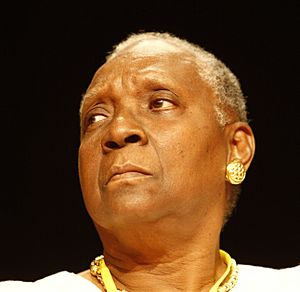
Guadeloupe has a rich history of literature. A Guadeloupean author, Saint-John Perse, won the Nobel Prize in Literature in 1960. Other famous writers from Guadeloupe include Maryse Condé and Simone Schwarz-Bart.
Music and Dance
Music and dance are very important in Guadeloupe. The mix of African, French, and Indian cultures has created unique music styles. One of the most famous is zouk music. Since the 1970s, Guadeloupean music has often used Guadeloupean Creole. People enjoy dancing to zouk, zouk-love, and compas.
Traditional music styles include biguine and gwo ka. Famous bands like Kassav' play these traditional styles. There are also international music festivals, like the Creole Blues Festival on Marie-Galante.
Classical music is also gaining interest. Le Chevalier de Saint-Georges, a famous composer from Guadeloupe, lived at the same time as Mozart. There is an annual music festival named after him.
Traditional Clothing
Traditional clothing in Guadeloupe is a mix of African, Asian, and European styles. For example, the colorful madras cloth comes from India.
In the past, during slavery, people had very few clothes. Later, as society changed, women started to create beautiful and unique outfits. These clothes showed their dignity and culture.
Today, traditional Guadeloupean clothing is worn for special events. It often includes many layers of colorful fabric. The madras headscarf is tied in different ways, each with a special meaning. For example, a four-pointed headscarf means "my heart has room for whoever wants it!" Gold jewelry, inspired by European, African, and Indian designs, is also an important part of the traditional look.
Delicious Food
Guadeloupean cuisine is a tasty mix of African, European, and Asian influences. It uses local farm products like plantains, yams, and okra.
From the sea and rivers, people eat fish like snapper, octopus, and sea urchins. Orchards provide fruits like mango, passion fruit, and guava. Spices like habanero chili are often used to make dishes flavorful.
Typical dishes include fish blaff, dombrés, and colombo (like Indian curry). For snacks, people enjoy accras (fried fritters) and bokit (fried sandwiches).
Desserts include blancmange and fruit salads. Local pastries like pâtés with jam are also popular. Pain natté, a braided bread, is often eaten.
Guadeloupe also makes candied fruits and jams. Sorbets like coconut sherbet are refreshing. And of course, rum is a very important drink, made in distilleries across the island.
Fun Festivities
At Christmas, families gather for chanté Nwel, where they sing carols and celebrate. After the holidays, people start preparing for the Guadeloupe carnival. Carnival groups parade through the streets every Sunday until the main festivities in February or March. Some groups use only drums and conch shells, with no brass instruments.
Shrove Tuesday is the biggest carnival day. Groups compete for the best costumes and music. On Ash Wednesday, which ends carnival, a mascot king called Vaval is burned. Everyone wears black and white to show mourning. Then, the 40 days of Lent begin.
After Lent, Easter celebrations take place. Families often go camping on the beach and eat traditional crab dishes like matété.
Sports and Activities
Football (soccer) is very popular in Guadeloupe. Many famous footballers come from Guadeloupe, including Thierry Henry, Lilian Thuram, and Kingsley Coman. The Guadeloupe national football team even reached the semi-finals of the 2007 CONCACAF Gold Cup.
Basketball is also popular. NBA players like Rudy Gobert and Mickaël Piétrus were born on the island.
Guadeloupe has produced many great track and field athletes, such as Marie-José Pérec and Christine Arron. The island is also known for its fencers, including Olympic gold medalist Laura Flessel.
Even though Guadeloupe is part of France, it has its own sports teams. Rugby union is growing in popularity.
Guadeloupe hosts the Karujet Race, a Jet Ski World Championship, every year. It's known as one of the toughest races. The Route du Rhum is a famous French sailing race that finishes in Guadeloupe every four years.
Bodybuilders like Serge Nubret and Marie-Laure Mahabir are from Guadeloupe. The island also loves cycling and hosts the Tour de Guadeloupe every year. Guadeloupe also hosts the Orange Open de Guadeloupe tennis tournament.
In boxing, famous fighters from Guadeloupe include Gilbert Delé and Jean-Marc Mormeck.
Getting Around
Guadeloupe has several airports. Most international flights use Pointe-à-Pitre International Airport. Boats and cruise ships use the ports in Pointe-à-Pitre and Basse-Terre.
In 2013, the local government decided to build a tramway in Pointe-à-Pitre. The first part will connect northern Les Abymes to downtown Pointe-à-Pitre.
Learning and Schools
Guadeloupe has its own education system. In 2018–2019, there were:
- 300 elementary schools
- 52 middle schools
- 38 high schools
The University of the French Antilles has two campuses in Guadeloupe: Camp-Jacob in Saint-Claude and Fouillole in Pointe-à-Pitre. There are also schools for apprentices and an Arts and Crafts Centre.
How Guadeloupe Gets Power
Energy Sources
Guadeloupe has good potential for solar, wind, and marine energy. However, in 2018, most of its energy still came from burning biomass, coal, and petroleum.
A law aims for 50% of Guadeloupe's energy to come from renewable sources by 2020. There are plans to use more biomass (energy from plants) to replace coal. This will help reduce pollution and the island's reliance on fossil fuels.
For example, a coal power plant will be changed to run on biomass. This will increase renewable energy from 20.5% to 35%. It will also greatly reduce carbon dioxide pollution.
Guadeloupe has a power plant that uses sugar cane waste to make energy. It also has 12 wind farms and a geothermal power plant in Bouillante. This plant uses steam from volcanic activity to make electricity. There are also plans to use energy from waves and ocean currents. Solar panels are used for homes and electric vehicles.
A small amount of electricity (2.2%) comes from hydropower, using dams on rivers.
Drinking Water
Most of Guadeloupe's drinking water comes from rivers and springs on Basse-Terre. Some also comes from groundwater on Grande-Terre and Marie-Galante.
Getting water to everyone can be a problem because the water pipes are old and leak a lot. This causes water shortages, especially in Grande-Terre. In 2020, about 61% of drinking water was wasted due to bad pipes. Also, 70% of wastewater treatment plants do not meet standards.
See also
 In Spanish: Guadalupe (Francia) para niños
In Spanish: Guadalupe (Francia) para niños




